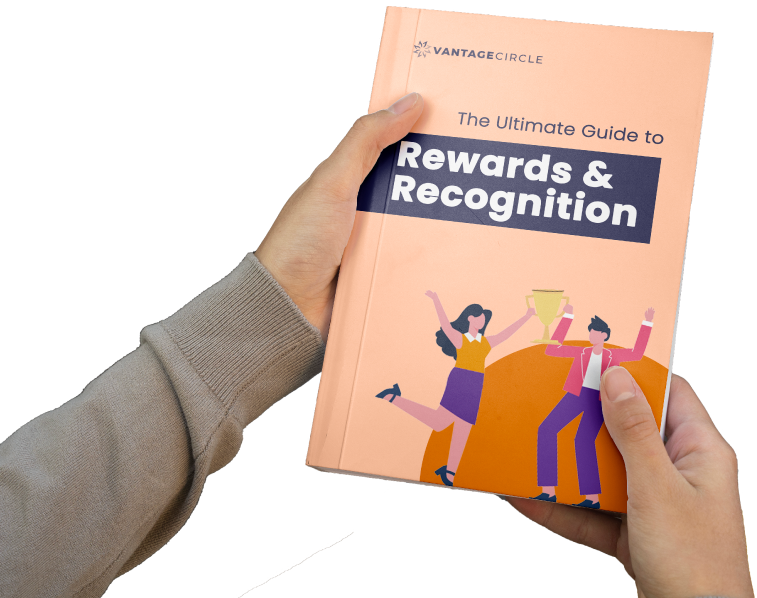Only Half of Your Team Feels Truly Seen. Here’s Why That Should Worry You.

A Global Employee Recognition and Wellness Platform
Recognition is everywhere —platforms, bonuses, shout-outs. But is it working?
What if we told you that despite all those efforts, only 55% of employees actually feel recognised… in a way that drives them to care, contribute, and stay?
That’s the uncomfortable truth emerging from The Recognition Effect , a new research report by Great Place To Work® India in collaboration with Vantage Circle. Based on data from 5.7 million voices across 1800+ companies, the findings are a wake-up call for leaders who think they’ve “checked the box” on recognition.
Let’s break it down.
1. Recognition works. But only when it’s felt.
Recognition isn't about what you say. It's about what they feel.
The report reveals a powerful emotional equation. When employees experience all four emotional signals—Appreciation, Acceptance, Validation, and Accomplishment—the results are explosive:
-
98% report strong workplace sentiment
-
97% say they intend to stay
-
96% feel motivated and agile
-
94% believe their company delivers great customer service
source : The Recognition Effect Report
But here’s the catch: fewer than 6 in 10 employees actually experience this emotional lift. Many are still stuck in what we call “recognition dead zones”—where appreciation is generic, inconsistent, or just plain missing.
Recognition isn’t about giving more. It’s about giving meaningfully.
2. A single missing signal cuts motivation in half. Literally.
Most R&R dashboards track usage: how many awards were sent, redeemed, shared. But almost none track emotional depth.
This report makes one thing clear—every missing emotional signal weakens impact. If an employee feels only somewhat appreciated but not truly accepted or validated, the numbers drop fast:
-
From 98% to 83% with one missing signal
-
Down to 60% with two missing
-
And a staggering 10% if none are felt
That’s not a dip. That’s a nosedive.
If your program isn’t triggering emotional resonance, it’s not driving behavior. It’s just noise.
3. Recognition still favors the visible, not the valuable.
Let’s talk equity.
Despite the noise around inclusion, recognition still tilts toward the usual suspects: senior leaders, long-tenured employees, extroverts, and men.
Men are 5% more likely to feel recognized than women
Gen X employees feel 14% more seen than Gen Z
Leaders feel appreciated at nearly twice the rate of frontline employees
This isn’t a resource gap—it’s not even about intent. It’s just a recognition design flaw.
When recognition is left to individual discretion or confined to top-down channels, it reflects existing power structures. And that means people doing excellent, invisible work—especially those from underrepresented groups—get missed.
If your recognition system is unintentionally amplifying bias, it’s eroding the very culture you're trying to build.
4. You don’t need more awards. You need smarter signals.
Here’s what the best organizations are doing differently:
They’ve shifted from output to identity. They recognize not just what people do, but who they are while doing it.
They’ve moved from occasional to everyday. Think peer-to-peer kudos, in-the-moment nudges, manager rituals.
They’ve abandoned ‘one-size-fits-all’. Recognition is public for some, private for others. Digital for some, handwritten for others.
In short: they’ve made recognition personal. Contextual. And emotionally intelligent.
This is exactly what we’ve embedded in the AIRᵉ Framework at Vantage Circle. It’s not a checklist—it’s a cultural architecture grounded in four principles:
-
Appreciation for effort
-
Incentivization for action
-
Reinforcement of values
-
eMotional Connect that makes it all stick
It’s how recognition becomes not just timely and visible—but deeply felt.
5. The real ROI of recognition? Better everything.
Still think recognition is soft?
Here’s what happens when it’s done right—based on data from the report:
| Outcome | High-Recognition Cultures | Emerging Cultures |
|---|---|---|
| Motivation | 94% | 73% |
| Retention | 93% | 76% |
| Customer Service Excellence | 94% | 78% |
| Discretionary Effort | 91% | 76% |
| Organizational Pride | 95% | 82% |
We’re not talking about marginal gains. These are double-digit uplifts across the board. And they’re not coming from perks or platforms—they’re coming from emotionally intelligent culture design.
6. So, what now?
This report makes one thing unmissably clear: recognition is no longer a nice-to-have. It’s a leadership discipline. A strategic culture lever. A driver of retention, trust, and performance.
But only if it’s done right.
Here’s what that looks like:
- Build recognition into the flow of work, not just end-of-year town halls
- Train managers to recognize with empathy, not just execute with efficiency
- Give employees equal opportunity to be seen, not just the loudest ones
- Design for emotion, not just for engagement scores
Closing Thought
At Vantage Circle, we’re proud to have co-authored this research because it reaffirms what we’ve always known—and what AIRᵉ was built to solve:
People don’t just want to be appreciated.
They want to be recognized—for who they are, what they bring, and how they show up.
If you want a culture that retains talent, inspires effort, and fuels performance, start by asking a simple but powerful question:
Are your people feeling all four?
Because when they do, recognition stops being a moment.
And starts becoming momentum.


















